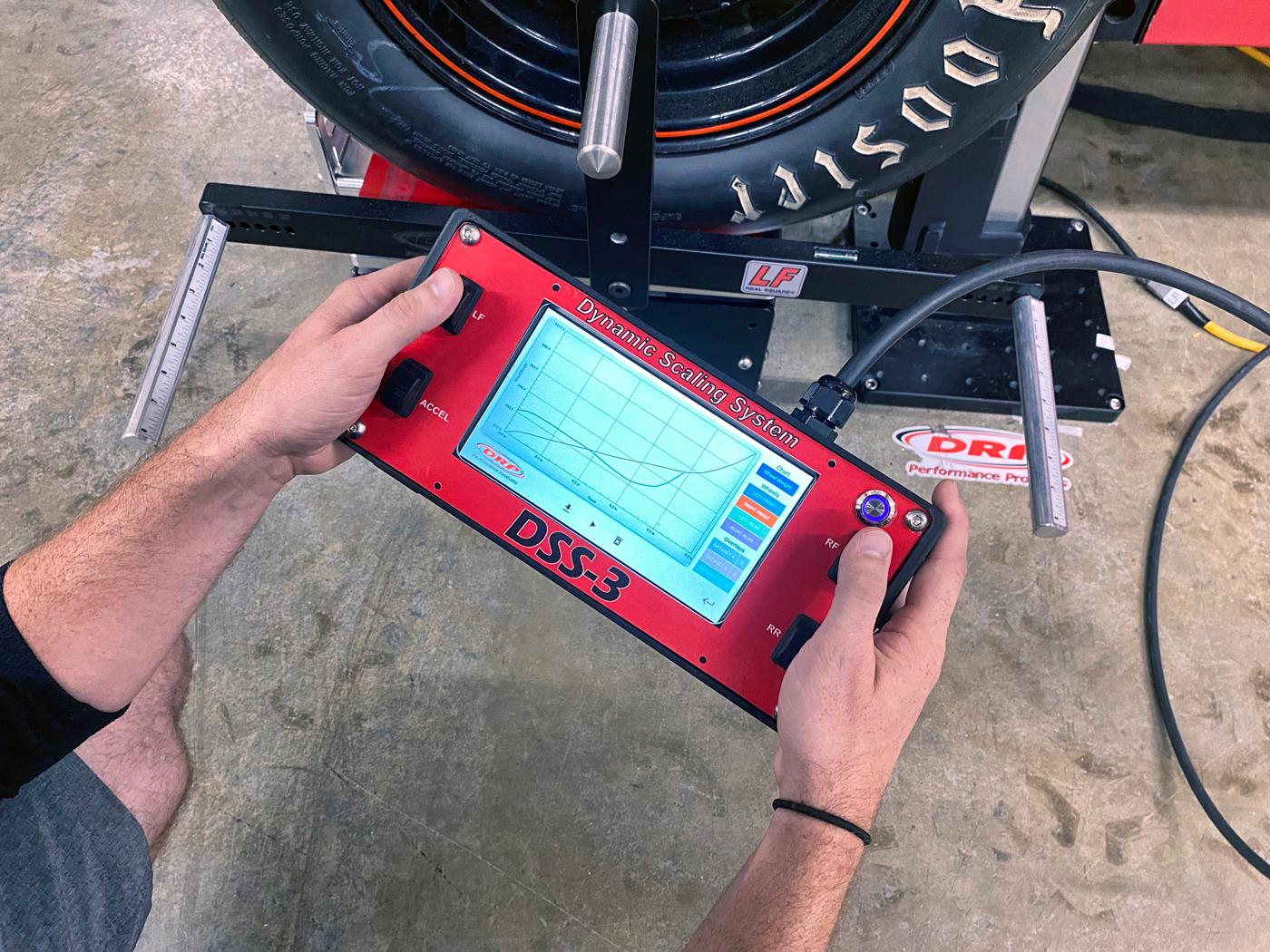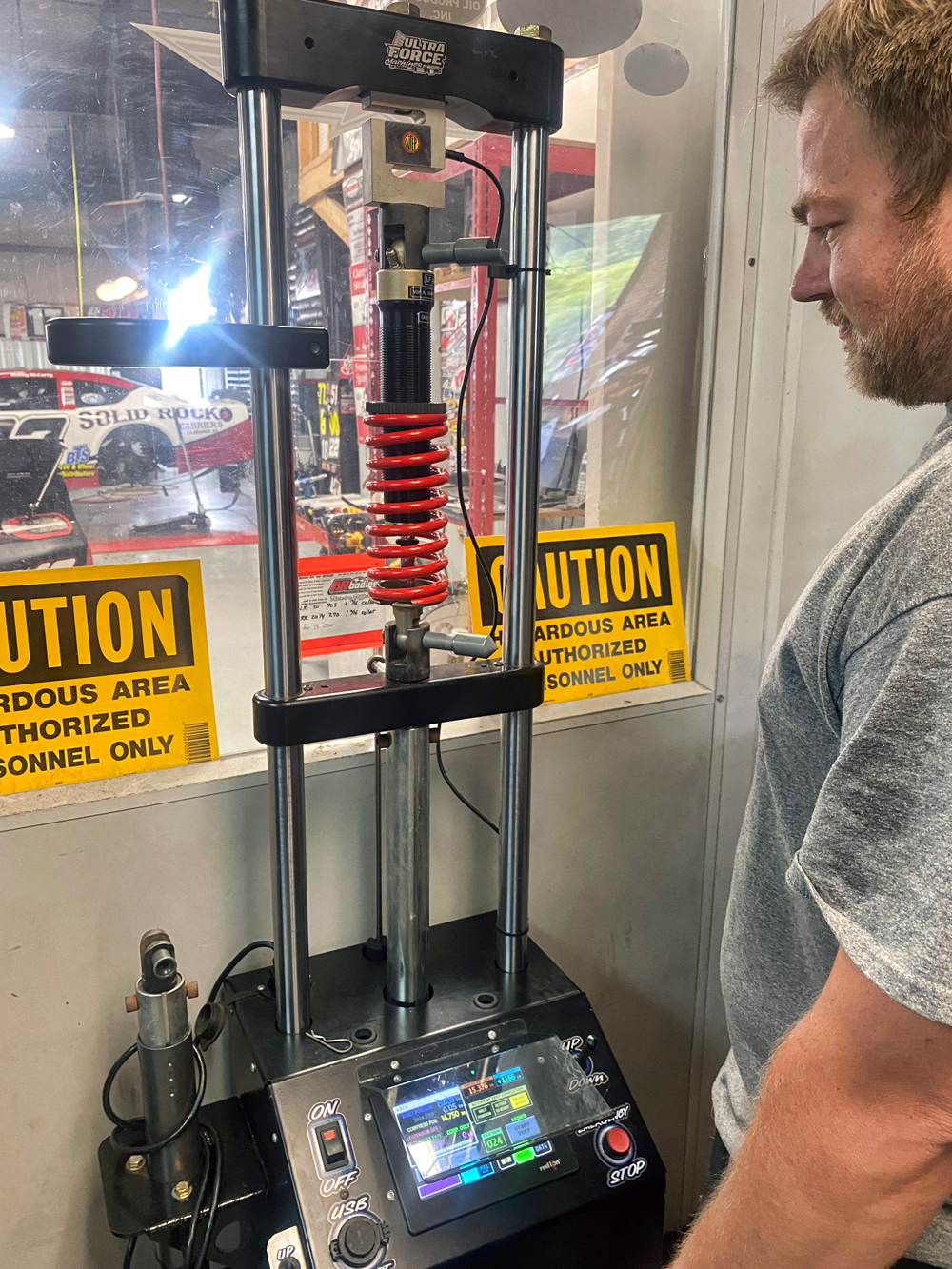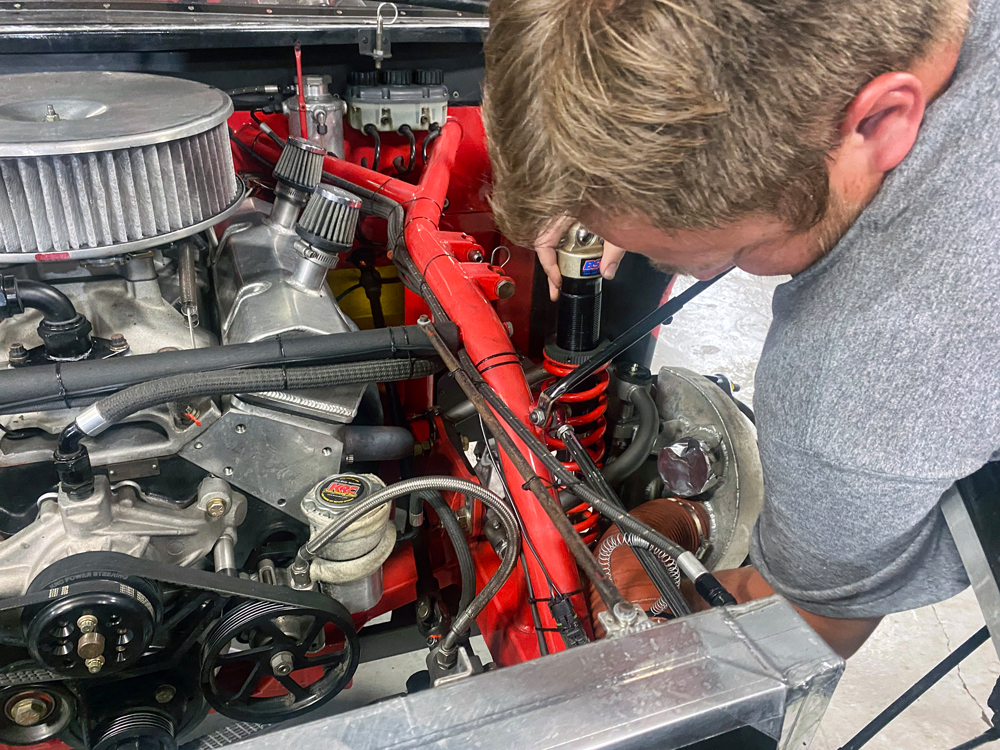PRI Education: Perfecting The Art Of Chassis Setup

Measuring the rate of wheel load increase on a pull-down fixture is called the wheel load curve, which indicates the likelihood of grip loss.
A proven system for gathering and analyzing data will help determine the best adjustments for your vehicle.
Like building a race-winning engine, race car handling is very complex. Teams struggle to master chassis setup week in and week out all over the world and in all types of racing applications. This is because many drivers don’t even know what a good handling race car should feel like. All they know is that it’s a battle. And, when teams “hit it” and find a good setup, they often can’t repeat it after the car gets damaged. Setup work becomes a little like “black magic” at that point.
But setup work shouldn’t be a battle. And it’s not black magic. The problem is we’ve all been guilty of taking shortcuts. Rather than taking the time to analyze data to find the appropriate solution, we call “our guy” and ask what to do. I often ask, “What would happen if you ran your business like you run your race team?” The answer: You would go out of business (or, at the very least, make a lot less money).
Like your business, your race team needs a system—a proven approach to gathering and analyzing data with processes to implement the setup adjustments needed.
Where To Begin?
Chassis setup can be broken into two categories: balance and wheel positions. The crew chief’s job is to set up the race car to obtain the optimum balance for the driver and the optimum wheel positions for the track and tire. Let’s dive a bit deeper into these topics.
Vehicle balance: The race car’s balance, which determines how the car rotates and maintains traction through turns, is driver-dependent ranging from loose (oversteer) to tight (understeer). Spoiler alert: If you put a driver with a preferred balance in an identical car with the opposite balance, the driver won’t be happy (or win).
Dynamic vs. static balance: Traditional setup procedures measure the vehicle’s balance on wheel scales at ride height (natural relaxed position of the suspension). This is effective, but it requires tremendous discipline. This is because you can adjust the balance statically to whatever you want it to be, but that doesn’t take into account important factors such as spring rate, dynamic platform, bump stop loads, sway bar loading, droop limiters, and binds. This is why you can have two cars with the same static wheel weights and percentages in the shop but handle completely different at the track.
Another option is to measure the vehicle’s balance in a loaded state, like it would be on the track. Many providers, including DRP Performance Products, do this by using a pull-down fixture to motion the chassis to a position it would see on the track at certain points, such as corner entry and apex. This allows providers to measure the vehicle’s balance at that point, taking all the factors mentioned above into account. You get a picture of the true balance of the car at that point. You’re measuring the results of your inputs, not just the inputs themselves.

What’s Missing?
Common feedback providers hear on dynamic scaling is: “But you can’t induce all the forces that are happening on the track, so your numbers aren’t right.” And you’re right—you can’t mimic every force that’s happening on the track. The good news, though, is you don’t have to. Think of the pull-down fixture as an engine dyno. When you dyno your engine, you’re not accelerating the car just like the driver does. The airflow is not just like it is on the track. The G loads are not there, the engine angles are not shifting as they do on the track. But what you do have is a good, consistent way to measure how much horsepower your engine is making in a controlled environment. That’s what the pull-down fixture does: It allows you to measure the balance of the car, under loads very similar to the track, in a controlled, repeatable environment. Like the engine dyno, it allows you to make adjustments and see how the adjustments will affect the car—all before you get to the track.
Wheel Positions
The other important set of handling inputs are the wheel positions. There’s nothing more important on a race car than the tires. You can work on balance the rest of your career, but if you don’t get the tires pointed in the right direction, you’re not going to have a good handling race car.
Wheel positions include toe, rearend position, camber, caster, stagger, tread width, and more. Like vehicle balance, wheel positions are best measured dynamically as well. Wheel positions, however, are adjusted to what the tire needs to make the most grip. This will vary depending on the tire and track condition. Higher banking, higher grip tracks will need higher camber and air pressures. Smaller, flatter tracks will need less camber and air pressure, but more rear steer.

The Ideal Situation
With the technology available today, a short-track team can show up at the track, unload fast, and make only minimal adjustments with all the work done in the shop. Adjustments are pre-determined, and guessing is eliminated. DRP recently had a customer who had top-of-the-line equipment but had resorted to some shortcuts in the setup process. In the busyness of race season, this person failed to test changes in the shop. At the track, the changes weren’t bad if the track had grip. As soon as the grip was lost, the car went from decent to junk. Back at the shop, after testing the setup on a pull-down fixture, this customer found the left front was more than 500 pounds lighter than it should have been, and the rearend had negative steer. No wonder the car got tight! This racer optimized the right rear travel, added some travel to the left front, and had a completely different race car. That’s to say the bad weekends could have been avoided with proper testing.
The Bottom Line
Everything on the race car works together as a system. You need the tires at optimum position and the loads balanced to the feel the driver wants. With the right measurements and the right system to interpret them, you can come really close to mastering the art of chassis setup...and do it in the comfort of your own shop.
Lynnie Doughton is the chief steward of DRP Performance Products based in Bassett, Virginia. DRP manufactures advanced setup equipment and premium low drag hub components for the automotive racing industry. With more than 30 years of full-time racing experience, Doughton is passionate about making it easier to race competitively, growing car counts, and prospering our sport.
 MEMBERSHIP LOGIN
MEMBERSHIP LOGIN JOIN PRI
JOIN PRI


